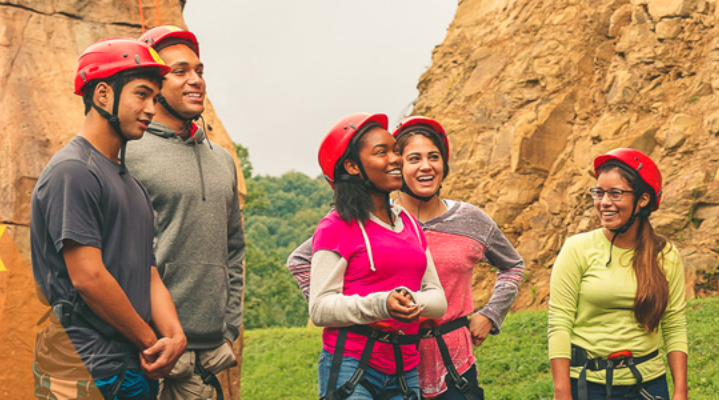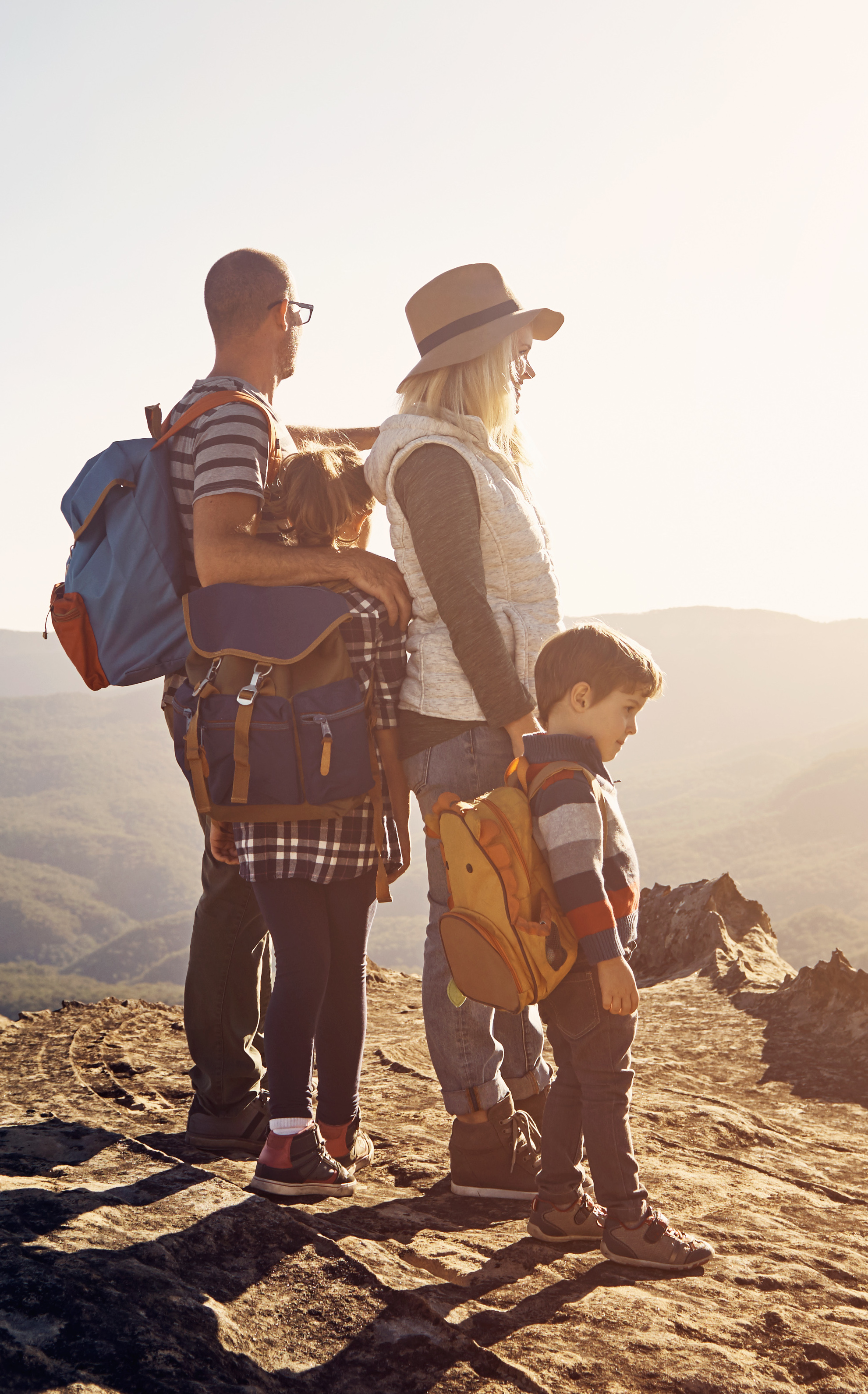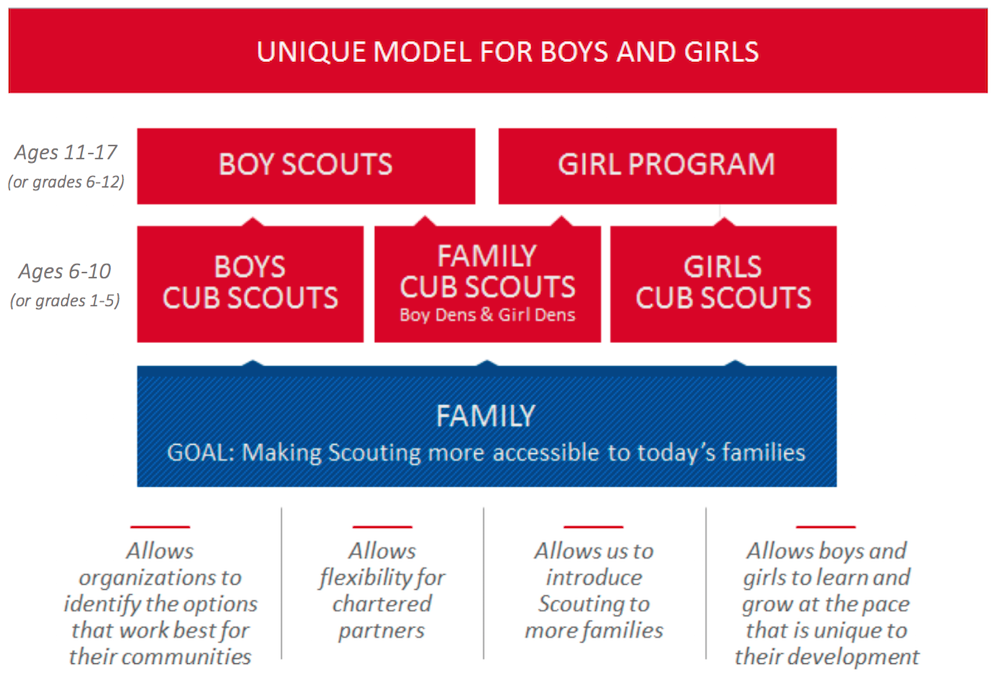
Top 6 Things to Know About Inviting Girls to the BSA
This week, BSA’s volunteer-led board of directors unanimously approved a plan to invite girls and young women into all Scouting programs.
Starting in 2018, Cub Scouting will be available to both girls and boys in the first through fifth grades (or 6 to 10 years old). A program for girls ages 11 to 17 will be introduced in 2019, enabling young women to work toward earning the rank of Eagle.
So what exactly does this mean for you and your council? Here are the top things to know about family Scouting, and how we can work together to bring the benefits of Scouting to more youth while remaining true to our mission:
- Meeting the needs of today’s families
- Is this change a departure from the BSA’s core mission and identity?
- Does this mean that Cub Scouts and Boy Scouts will be co-ed?
- Can a pack decide to remain boys-only? Can there be girls-only packs?
- What will this mean for girls after Cub Scouts?
- What does this mean for Youth Protection?
Meeting the needs of today’s families
Our members—both youth and adult— consistently tell us that the values, character, and leadership skills taught through Scouting are needed for the entire family. So in order to help meet those needs, BSA’s traditional Scouting programs will be offered to all youth through family Scouting.
 “I’ve seen nothing that develops leadership skills and discipline like this organization,” Randall Stephenson, CEO of AT&T and president of BSA’s national board said Wednesday.
“I’ve seen nothing that develops leadership skills and discipline like this organization,” Randall Stephenson, CEO of AT&T and president of BSA’s national board said Wednesday.
“It is time to make these outstanding leadership development programs available to girls.”
Independent research reinforces the requests the BSA has received from families interested in the type of programs that BSA offers for their daughters. According to the research:
- 90 percentof parents not involved with the BSA expressed interest in getting their daughter involved in programs like Cub Scouts.
- 87 percent of parents not involved with the BSA expressed interest in getting their daughter involved in programs like Boy Scouts.
We also sought input from our volunteers, chartered partner organizations, parents, youth-development experts, and other stakeholders. Thousands of individuals offered their perspective on how to better serve families through Scouting, and we took all of that feedback into account when developing this offering.
Is this change a departure from the BSA’s core mission and identity?
No. In fact, this aligns with our mission and values. Our mission is to prepare young people to make ethical and moral choices over their lifetimes by instilling in them the values of the Scout Oath and Scout Law, such as the importance of maintaining a sense of Duty to God and Country. To achieve our mission, we create innovative programs and evolve existing ones to meet the needs of today’s families and deliver them through dedicated volunteers in communities across the nation.
Our time-tested curriculum will remain the same—BSA’s program content and activities are appropriate for boys and girls alike, as are the current rank advancement requirements. As always, volunteers have the ability to tailor activities to meet the developmental needs and abilities of Scouts in their packs and troops.
There are no plans to change our name at this time. We are focused on serving youth with the best character and leadership development program possible.
Does this mean that Cub Scouts and Boy Scouts will be co-ed?
The BSA strongly believes in the benefit of single-gender programs, and the family Scouting model builds on the benefit of a single-gender program while also providing character and leadership opportunities for both boys and girls.
Can a pack decide to remain boys-only? Can there be girls-only packs?
Yes—starting in 2018, existing Cub Scout packs can elect how they wish to open their membership.
An existing pack may choose to recruit girls or remain an all-boy pack. When creating a new pack, a chartered organization may form an all-boy pack, an all-girl pack or a pack of girls and boys.
Remember, each Cub Scout pack is comprised of multiple dens. Cub Scout dens will be single-gender — all boys or all girls. Cub Scout packs, meanwhile, can include any combination of all-boy or all-girl dens. The choice is left to individual pack leaders in consultation with their chartered organization.
What exactly is a Cub Scout pack or den? And what’s the difference? Learn more about Cub Scouts here.

What will this mean for girls after Cub Scouts?
A program for girls age 11 to 17 will be announced in 2019, allowing participating girls to achieve Scouting’s highest rank, the Eagle Scout Award.
By paving a path for young women to earn the Eagle Scout rank, more of our future leaders will be equipped with the life-long values that BSA has instilled in youth for more than a century.
As Eagle Scout expert Bryan on Scouting puts it, “Rest assured there will be such a program in place when the time arrives. And it will be awesome.”
What does this mean for Youth Protection?
Youth protection and safety is paramount in all of the BSA’s programs. We invest resources and time to continuously strengthen our youth-protection program. As we begin to develop procedures for girls joining Cub Scouts and the program for older girls, we will be evaluating any changes needed to ensure the safety of all youth.
To learn more about family Scouting, head to Scouting Newsroom for fact sheets, news, and more.



